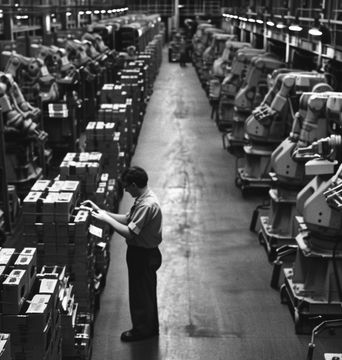AMAZON TRADES 100K HUMAN JOBS FOR 750K ROBOTS: IS THIS AI TAKEOVER A WINDOW INTO FUTURE WORKFORCE?

The juggernaut of e-commerce, Amazon, instigates a dramatic shift in global workforce dynamics as it plans to replace 100,000 human employees with a staggering 750,000 robots. As automation marches on forcibly, the way businesses operate is set to undergo a colossal transformation, with potential repercussions reverberating across industries and labor markets.
Amazon, with a globally dispersed, 1.5 million-strong workforce, has been rapidly scaling its use of robotics. After launching 200,000 robots in 2019, plans are underway to introduce an impressive 520,000 more by the end of 2022. With such a large-scale workforce replacement, the company envisages a highly automated future, threatening to make traditional, routine jobs obsolete.
The robotics solutions Sequoia and Digit have been game-changers for Amazon, boosting warehouse efficiencies by up to an impressive 75%. The economic feasibility of this pivot is palpable: faster processing times, increased productivity, and reduction in manual labor form a compelling case for this bold transition.
However, despite the accelerating pace of automation, Amazon insists the move is not about replacing people. Instead, it argues that this change lays a foundation for creating higher-skilled jobs, enhancing synergy between advanced technology and the human workforce.
The deployment of advanced robotics sparked unease and concern about the human role amidst the growing automation of repetitive tasks. The fear of a dystopian work culture where robots execute significant labor is palpable among the workforce.
Parrying these fears, Amazon's Global Robotics' Head highlights how robotics are in fact, assisting employees. By reducing physical strain and enabling them to learn new skills, the robots act more as facilitating tools, freeing up people's time to engage in tasks that require more cognitive effort and creativity.
Following the implementation of these automated units, Amazon number-crunchers report the creation of 700 new, high-functioning roles. This is in addition to the 50,000 roles created at European fulfillment centers – roles that were enriched and made more productive by the new robotic co-workers.
The drastic shift in Amazon's job sector heralds a broader cultural change in the working world. It positions tasks requiring high skill levels and creativity at the forefront, potentially letting go of tasks that can be programmed algorithmically into machines.
The shift initiated by Amazon might serve as a prominent case study for emerging economic trends, where integration of advanced technology, particularly AI and robotics, will significantly reshape industries, labor markets and the nature of work itself.
As society reconciles with these changes, the discourse now shifts to developing new skills and roles that complement these advanced technologies. Consequently, a merger between human ingenuity and robotic precision seems the way forward, turning a potential threat into a formidable team.
Predicting the future might be futile, but the changes driven by Amazon serve as a compelling bellwether. It gives rise to a pertinent question – how can we effectively integrate technology to balance out automation and human creativity in the face of the fourth industrial revolution?